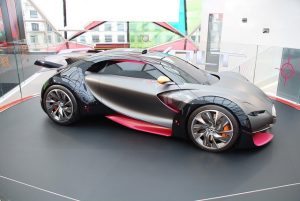Concept vehicles or a concept car is a vehicle which is used to display brand new technology or latest styling. You can encounter these types of cars at motor shows, and automotive owners/manufacturers prefer to showcase them as they help to attain customer reaction. These vehicles enhance their potential sales and also steal the show with their enticing looks, high-tech interiors, and heavy, shiny wheels.
Have you ever wondered how manufacturers/designers come up with innovative concept cars? Why do they manufacture them, and how do they progress from the drawing board to motor shows?

What’s the point of making concept vehicles?
It is all about image:
The principal reason why automakers build concept vehicles is ‘image.’ Modern automakers launch new vehicles at auto shows as they hope to make headlines far and wide with their latest pictures. They know that big wheels and futuristic styling are striking and the pictures of these vehicles run a few images of flamboyant concept cars. Manufacturers expect that readers, in turn, will notice the photos and transform their perception of a brand.
Showcasing Technology
The image is not only the reason for concept cars. Another reason brands might showcase a design model is, new technology. Showing images do not provide much attention, so they prefer to explain the newer technologies involved in the vehicle. For example, many automakers today are developing concept cars with hybrid drivetrains, which will surely eye-grabbing that just a hybrid engine in a typical production car.
Spotting user’s interest
Concept cars increase enthusiasm among buyers and also maximize the demand. These vehicles help to know the significance of their fabrication.
The Design Process:
Concept vehicles are designed with a sketch, simple forms and ideas that are drawn together until a shape worthy of a car have been developed. Elements such as steering, wheels, seats, exterior lights, will be incorporated into the vehicle to create a car. Meanwhile, there are many power train suggestions and technical solutions from a professional team. Elements such as seating layouts and door mechanisms are considered high while showcasing these vehicles at motor shows.
Following the drawing stage, the technical team builds ideas digitally on a computer where the design can be explored in three dimensions and even animated one. There is another option called ‘clay modeling.’ This is nothing but old technology though a milling machine sculpts a full-size model.
With the advent of technology, the design process starts on a computer using CAD (computer-aided design) and then be made as a mock-up or a working model that can then be tested and refined.
However, the competition between vehicle manufacturers is high as there is pressure to produce innovative and pioneering designs/vehicles, so the process of developing exhibits ahead of a motor show has to be kept top secret.
When car manufacturers face extreme competition, strict secrecy surrounds the new models and concepts they disclose at the world’s motor shows, and that means they need securely enclosed vehicle transport.
